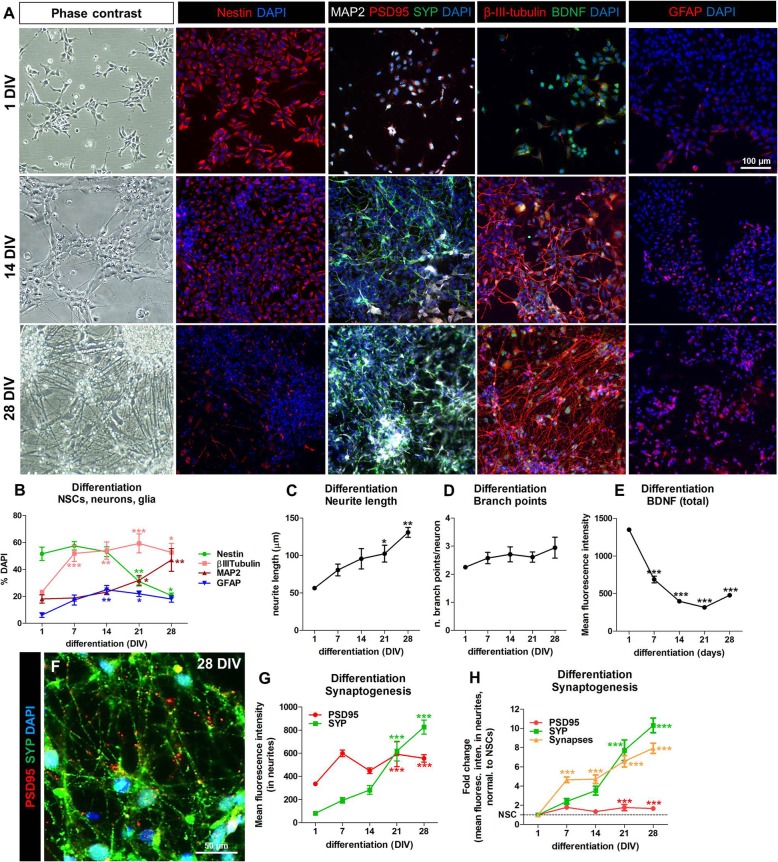Fig. 3.
Characterisation of synaptogenesis, neurite outgrowth and BDNF protein levels in hiPSC-NSCs undergoing differentiation toward neurons and astrocytes. (a) Representative phase contrast and immunocytochemical (IC) images of NSCs (1 DIV, upper row), NSCs following 14 days (14 DIV, middle row) and 28 days of differentiation (28 DIV, lower row). Immunocytochemical images display cells stained for nestin (red), microtubule-associated protein-2 (MAP2, white) with postsynaptic density protein 95 (PSD95, red) and synaptophysin (SYP, green), β-III-tubulin (red) and brain derived neurotrophic factor (BDNF, green), and glial fibrillary acidic protein (GFAP, red). (b) Quantification of nestin, β-III-tubulin, MAP2 and GFAP expressing cells shown as percentage of DAPI stained cells, comparing cells at 7, 14, 21 and 28 DIV of differentiation, to NSCs (1 DIV). Analysis was performed using immunofluorescence and high content imaging (HCI), using the Array Scan vTi platform and the Neuronal profiling V4.1 BioApplication. (c) Neurite length analysis and (d) number of branch points/neuron were evaluated by using β-III-tubulin staining. (e) Quantification of the total BDNF levels (mean average intensity normalised to undifferentiated NSCs, 1 DIV). (f) Representative immunocytochemical image (at 40x magnification) of NSCs differentiated for 28 DIV and stained for PSD95 (red) and SYP (green). (g, h) Total levels (g) and normalised levels (h) of PSD95 and SYP proteins expressed as mean fluorescence intensity localised in neurites (stained with MAP2, not shown in the picture). In h, values were relative to undifferentiated NSCs; in H also the number of synapses (i.e., number of overlapping SYP and PSD95 spots in the neurites) is shown. Data are represented as mean ± S.E.M. of 3–4 biological replicates

